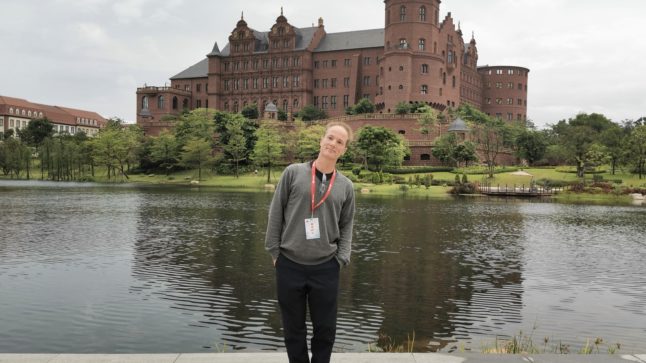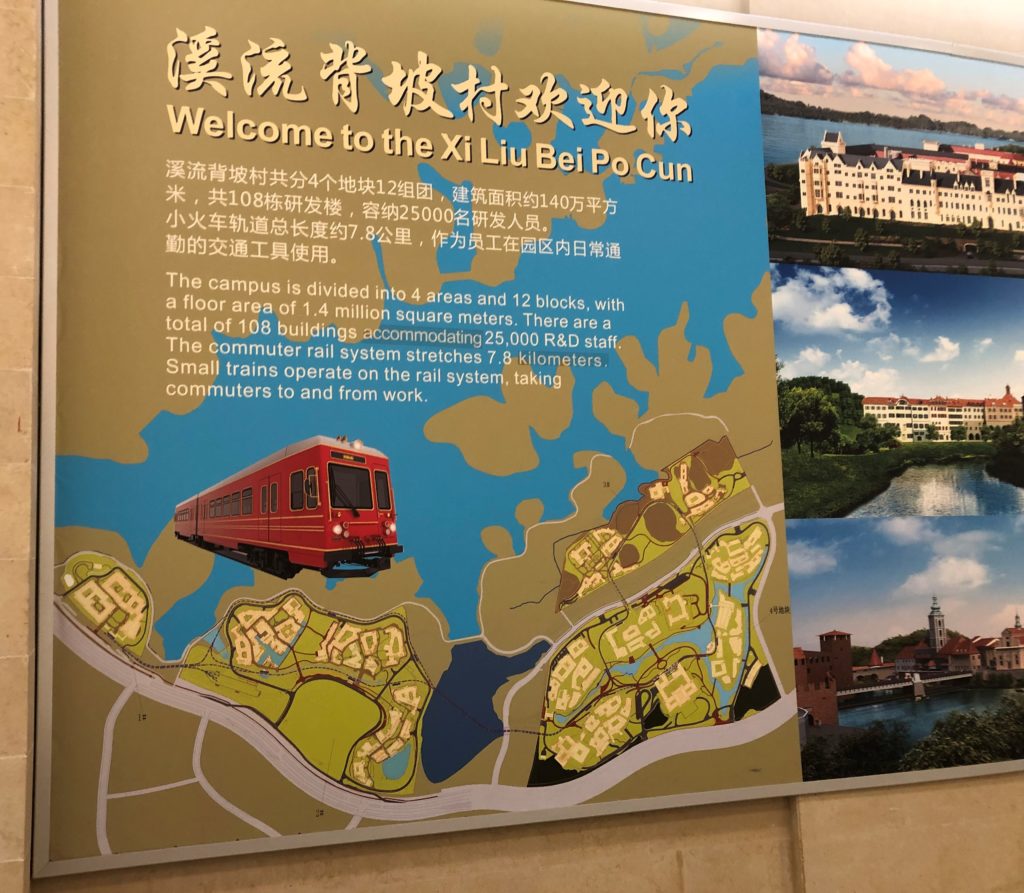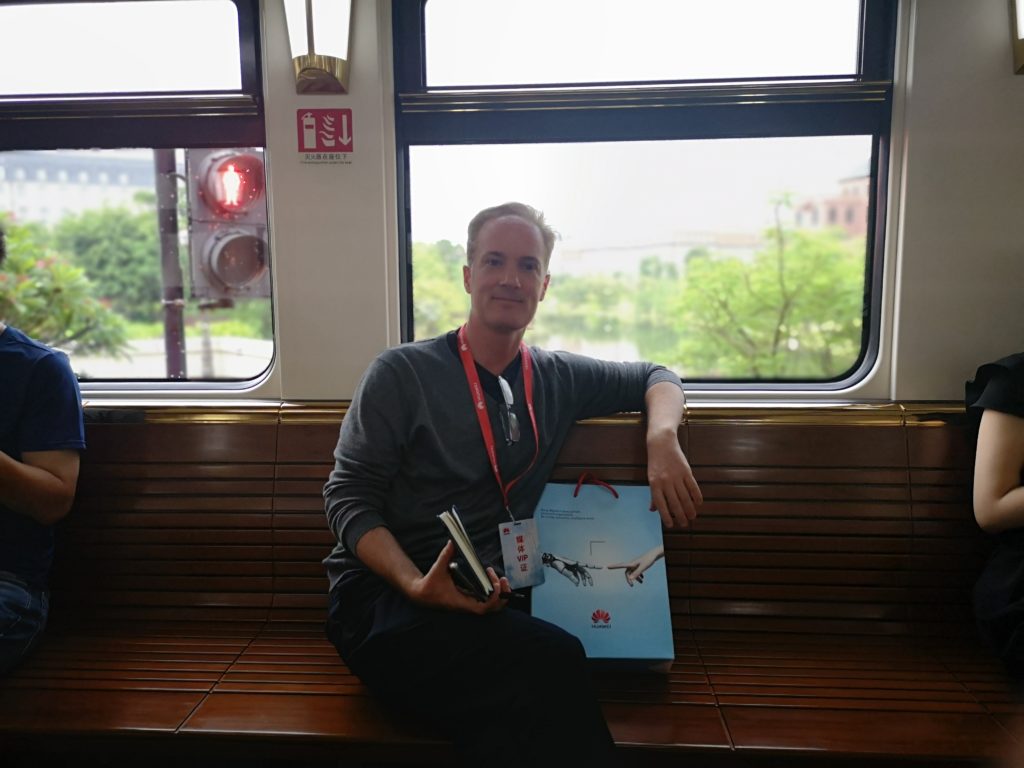This is Part 2 of my take-aways from my visit to Huawei headquarters. You can find Part 1 here. I’ll be releasing more in-depth articles shortly.
One of the cooler parts of Huawei is the “European town” campus they have built in Dongguan. A $1.5B campus based on multiple European towns. There is Verona. There is Czech. There is the Palace of Versailles. It’s crazy. And I’m generally all in favor of billionaires doing crazy stuff. There’s nothing more boring than a sensible billionaire. Here’s a pretty good video of the campus.
The Europetown campus opened in 2018. And they have already moved in +20,000 staff, with another 10,000 on the way. And the whole facility is focused on research and development. Which brings me to my third take-away from my visit.
Take-Away #3: Huawei is Now Going for Tech Leadership.
During the press conference, Chairman Liang Hua made an interesting comment about how HR strategy should align with business strategy. And that got my attention because, since the US export ban, Huawei appears to be changing its HR strategy.
- Huawei has recently announced its attention to hire +20 “geniuses”. They are offering high-profile scientists very high salaries. And they have said they are aiming to possibly have 1,000 advanced technologists by 2020. This could eventually grow to be 1% of staff by 2025.
- Ren Zhengfei has recently been talking about a significant organizational restructuring of the company over the next 3 years.
One of the interesting things about Huawei is how focused they are on the organizational systems for their people, whom they describe as their only resource. And Ren Zhengfei just seems fascinated by the subject. He has been giving talks and issuing papers on organization strategy since 1994.
HR strategy tends to be a leading indicator for business strategy at Huawei. And my working hypothesis is that the company has changed its business strategy and is now going after technology leadership.
Some background. Huawei has long operated with a fairly regimented organizational and compensation structure – focused mostly on sales & marketing and research & development. And, generally speaking, this was about creating very aggressive battalions of engineer managers. This is an important point. While Huawei is often discussed in terms of technology and its legions of engineers, the company has always been far more of a customer service and product company than a tech company. They don’t hire top engineers in order to make technology breakthroughs. They hire engineers and turn them into high-performance business managers. The focus on creating products more than technology. And they focus on creating team leaders more than geniuses. And this strategy served them well as a low cost manufacturer in a high growth market, that was mostly a fast follower in technology.
However, in recent years, Huawei has increasingly started to lead in certain tech areas, such as 5G and IoT. And if they were thinking about moving to more of a tech leadership role, the US export ban made it a necessity. Or at least convinced them.
And that creates a challenge. Because their current organization and compensation structure is somewhat at odds with the type of collaborative, creative atmosphere that is common at technology leaders. Can a structure fine-tuned to organize battalions of high-performing engineer managers also do technology collaboration and creativity? I think this question is the organizational restructuring Ren Zhengfei has been talking about. But that’s just a guess.
From their initial moves in the past month, they appear to be building a new tier of employees who will sit outside of their current structures. This means a group that will be outside of the extensive performance metrics they use to build high performance engineer managers. It means recruiting and/or elevating employees who are the best-of-the best and giving them free reign to create and collaborate. The military and “battle mode” analogies so common at the company will not work with this group.
And this will be a longer-term strategy. They can deploy “commando squads” to fix supply chains and develop operating systems. But technological leadership takes many, many years. But you can hear this intention from management when they talk about spending $150B in R&D over the next ten years.
Anyways, this is what I was thinking about while touring Europetown, their new R&D hub. My third take-away is that Huawei is moving to become the technology leader in information and communications technology (and beyond). And their recent actions and announcements in HR are an early indicator of this.
***
That’s it for Part 2. In Part 3, I’ll talk about the recent earnings announcements.
Cheers, jeff
- Huawei Going “Battle Mode” Is Bad News for Ericsson. Take-Aways from My Visit to HQ (pt 1 of 4)
- The Real Impact of the Huawei Export Ban Is Still on the Way (pt 3 of 4)
- Huawei Is Digging In for a Long-Fight. And They Are Probably Going to Win. (pt 4 of 4)
—-
I am a consultant and keynote speaker on how to accelerate growth with improving customer experiences (CX) and digital moats.
I am a partner at TechMoat Consulting, a consulting firm specialized in how to increase growth with improved customer experiences (CX), personalization and other types of customer value. Get in touch here.
I am also author of the Moats and Marathons book series, a framework for building and measuring competitive advantages in digital businesses.
Note: This content (articles, podcasts, website info) is not investment advice. The information and opinions from me and any guests may be incorrect. The numbers and information may be wrong. The views expressed may no longer be relevant or accurate. Investing is risky. Do your own research.







